Door Knobs or Door Handles: How To Choose

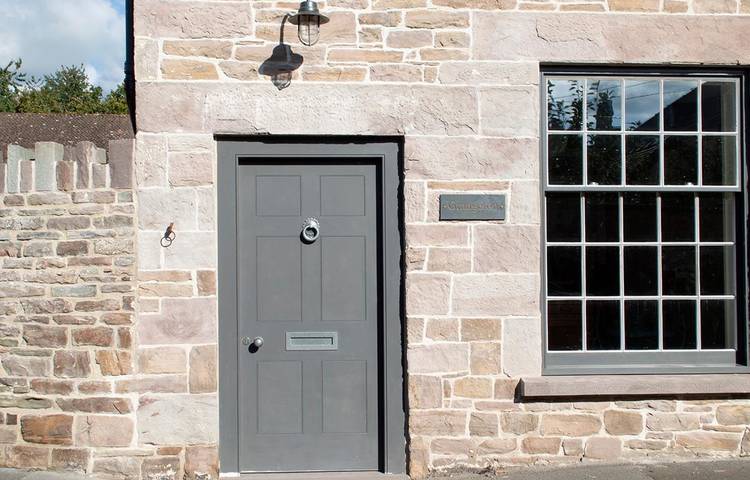
Door Knobs or Door Handles? A Comprehensive Guide to Choosing the Right Door Furniture
Published: 18 January 2021 | Last Reviewed: 31 March 2025
This post is part of our regularly reviewed content series, ensuring all advice remains accurate and relevant to your home project.
Author: Carl Benson
Carl is the founder of Suffolk Latch Company, with a background in engineering and over 20 years’ experience in home hardware. He works closely with suppliers and designers alike to develop quality ironmongery that stands the test of time. (Read my full bio.)

Introduction
Choosing between Door knobs or Door Handles for your home may seem straightforward, but it can actually be a tricky decision. The door furniture you select impacts not only the look of your doors but also their functionality, security, and ease of use. Should you go with a classic round door knob, or opt for the ease of a door handle lever?
In this guide, we’ll break down the pros and cons of each option, discuss installation and maintenance tips, and explore how factors like exterior use and architectural style (from modern builds to Victorian homes) can influence your choice. By the end, you’ll have a clear understanding of which option is best suited for your needs.
Table of Contents
• Installation and Maintenance Tips
• Using Knobs or Handles on Exterior Doors
• Style Considerations (Modern vs. Period Homes)
Door Knobs: Pros and Cons
Door knobs have been around for centuries and remain popular for their timeless appearance. Historically, door knobs for exterior doors were common in Georgian and Victorian times – often paired with separate key locks for security. Before modern mortice latches were invented, surface-mounted rim locks with knobs were a staple in period properties.
If you’re aiming for authenticity in a heritage renovation, door knobs might be your first choice. However, there are several practical points to consider before you decide on knobs for every door in your home.
Pros of Door Knobs:
Classic Period Style: Door knobs offer authentic period detail that suits traditional and heritage homes. From Georgian brass knobs to Victorian porcelain designs, they provide a vintage look that lever handles often can’t replicate. (For example, door handles for Victorian doors do exist in reproduction form, but many Victorian-era homes originally featured ornate knobs, so using door knobs can better preserve that historical character.)

Beehive Door Knobs Rosewood & Ebonised - £31.00
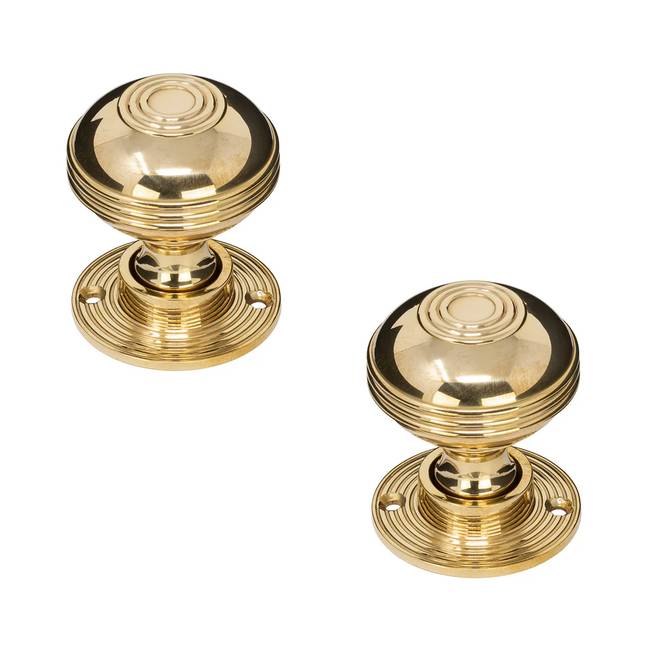
Ringed Brass Door Knobs - £43.00
BEEHIVE & BRASS DOOR KNOB PRODUCTS
Fewer Snagging Issues: Because of their rounded shape, there’s less chance of catching clothing or bags on a door knob. In tight hallways or closets, knobs may be safer in this regard than lever handles, which stick out and could snag loose sleeves or straps.
Ideal for Certain Locks: If you have a traditional rim lock on a door, a door knob is typically the only compatible option. Rim locks sit on the door’s surface and are designed to be used with knobs rather than lever handles. In this case, the door and knobs work together as part of the period-correct hardware assembly.
Cons of Door Knobs:
Less Ergonomic to Operate: A knob must be gripped and turned, which can be harder to manage for some people. Small children or anyone with limited hand strength (such as those with arthritis) might struggle with a knob’s grip-and-twist motion. In an emergency (like a child needing to exit a room quickly), a stiff knob can be problematic. (We’ll cover more about accessibility and ease-of-use in a separate guide.)
Requires Space from Door Edge: Door knobs need to be positioned further from the edge of the door compared to handles. This distance (known as the backset) should ideally be around 3 to 4 inches from the door edge to prevent your knuckles from rapping against the door frame when you turn the knob. On doors with very narrow stiles or with glass panels near the edge, a knob might simply not fit comfortably. In such cases, a lever handle (which can be placed closer to the edge) would be more suitable.
Not Ideal for Modern Locks: For external doors that need secure locking, knobs can be less convenient. Most high-security locks (such as a BS3621-rated mortice sash lock required by many insurance policies) are designed to work with lever handles. While you can use door knobs on a front door, you’ll typically need a separate deadbolt or key-operated lock in addition to the knob latch. In short, door knobs for exterior doors are less common today because a knob alone won’t meet most security needs without that additional lock.


Horizontal Bathroom Sashlock

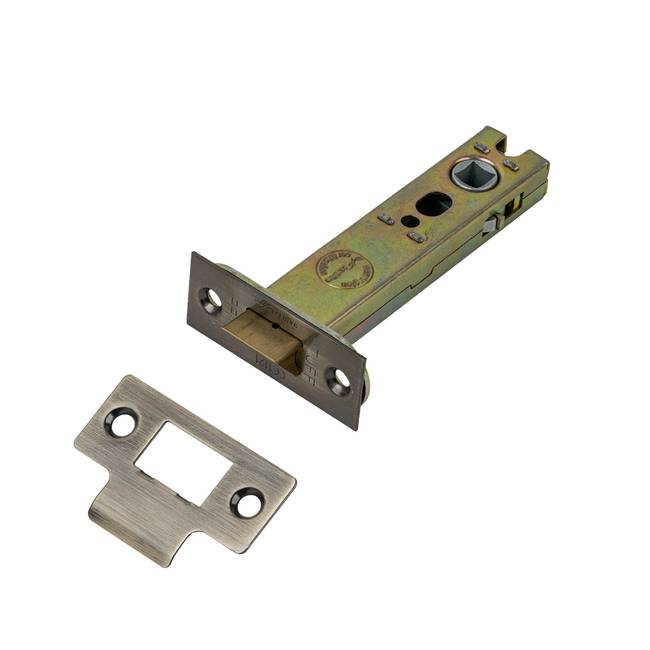
Heavy Duty Tubular Latch - 4 Inch
Door Handles: Pros and Cons
Door handles (lever handles) are a more modern invention and have become the go-to choice in many homes due to their ease of use. Instead of twisting, you simply push down on a lever. This mechanism is inherently more accessible for a wide range of users and allows for quick operation.
Lever handles are often seen on newer doors and are standard for many door handles for exterior doors because they integrate well with advanced locks and multi-point systems. Whether you’re outfitting a contemporary new build or updating an older home for better functionality, lever handles offer some clear advantages. That said, they also have a few drawbacks to weigh in your decision.
Pros of Door Handles:
Easy to Grip & Open: Lever handles are very user-friendly. You can operate a handle even with an elbow or a single finger, which is handy when your arms are full of groceries or laundry. For households with young children or anyone who finds turning a knob challenging, handles are much easier. In fact, door handles knobs debates often come down to this practicality. If accessibility is a priority (for example, if some family members have limited dexterity), handles are generally the better choice.
Flexible Installation & Compatibility: A handle can be placed closer to the edge of the door, typically using a standard tubular latch (a 2.5-inch or 3-inch backset works fine). This makes handles suitable for doors with less stile width or those with glass panes where a knob might not fit. Also, lever sets come in various types (passage latches, privacy sets, and full locking sets for secure doors). In short, handles are available for just about any door in the house, interior or exterior, without special modifications.
Wide Design Variety: Door handles come in an enormous range of styles and finishes, from sleek modern chrome bars to ornate iron scrolls. This variety makes it easier to match a handle to your home’s decor theme. If you want to update your home with a contemporary look, you’ll find plenty of lever designs that stand out. (By contrast, door knobs tend to be offered in more classic styles, which can limit your choices for ultra-modern interiors.)
Cons of Door Handles:
Not as Period Authentic: In a very traditional or historic setting, modern lever handles might look out of place. For example, in a cottage restoration or a Victorian townhouse, straight lever handles could clash with the period aesthetic. While you can find door handles for Victorian doors that are designed with ornate or antique-inspired details, they still may not deliver the same authenticity as true vintage-style knobs.
Can Catch on Clothing: The protruding lever can snag pockets or purse straps if you brush by too closely. In confined spaces like narrow hallways or under-stair doors, this is something to consider. If a particular door is in a tight spot where people frequently squeeze by, a knob might actually be the safer bet to avoid the “caught on the handle” mishap.
Maintenance and Wear: Internal springs inside the handle mechanism allow the lever to return to horizontal after use. Over time, these springs can wear out or weaken, leading to a drooping or sagging handle. This usually takes many years (especially if you invest in quality hardware), but it is a maintenance consideration — you might need to occasionally tighten a loose lever or eventually replace the spring mechanism (often by swapping out the latch) to fix a floppy handle. A knob, by contrast, often has no internal spring (it relies on the latch’s spring), so there’s one less part that can wear out.
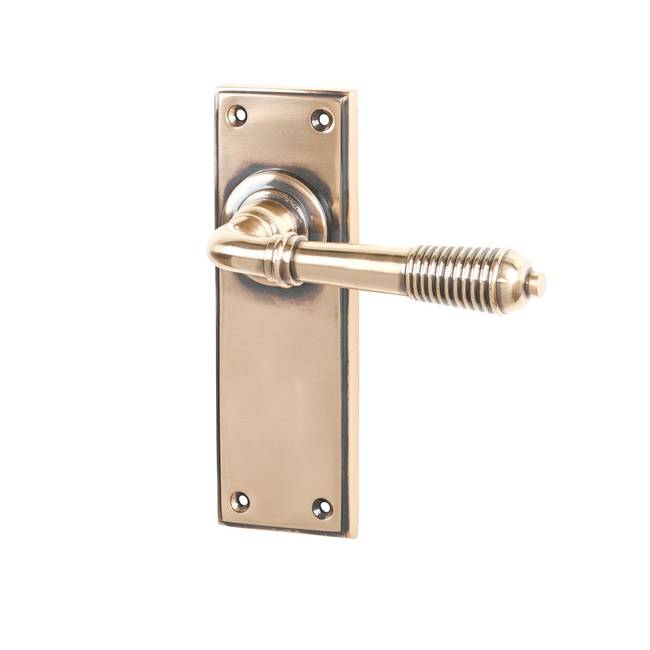
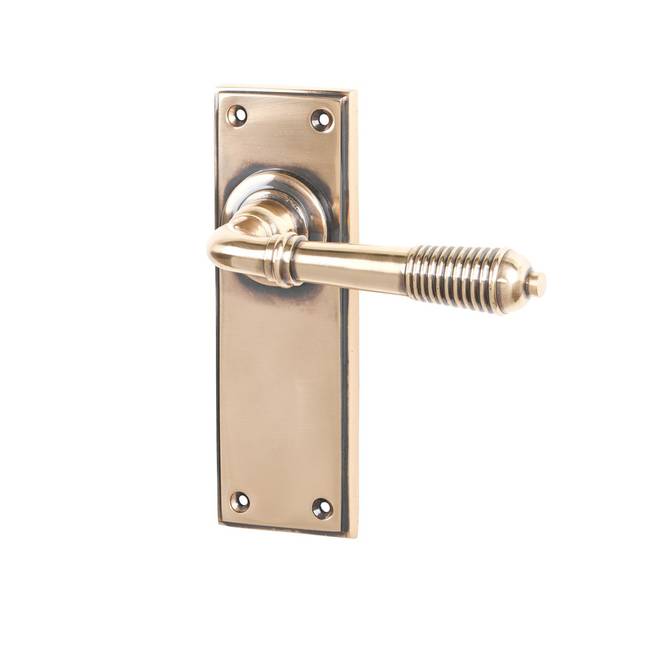
Reeded Lever Handles in Aged Bronze
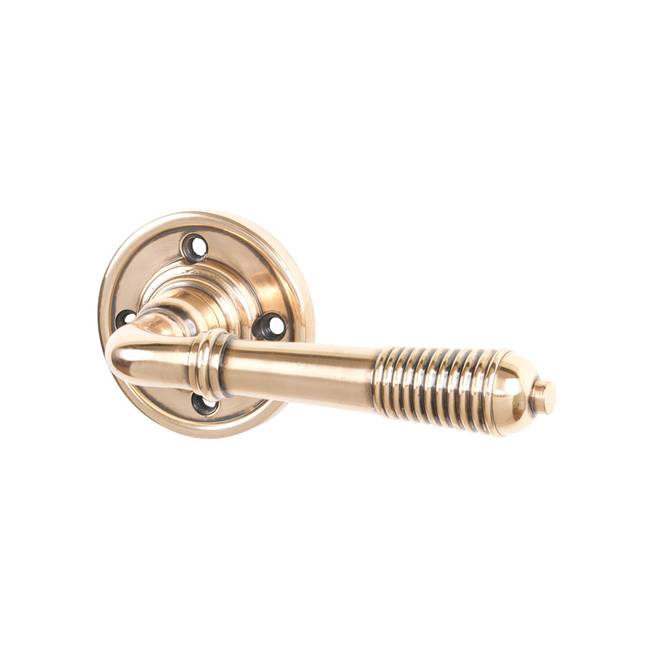
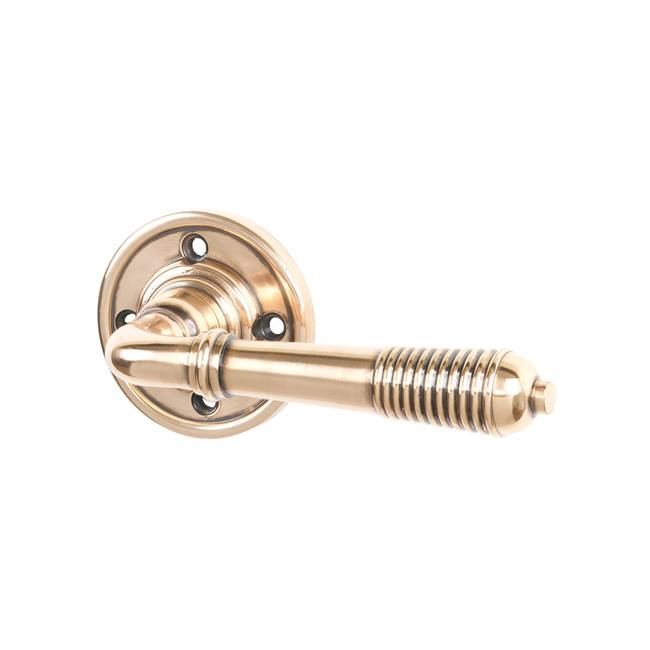
Reeded Lever on Rose Handles
Installation and Maintenance Tips
Installing door handles knobs (whichever you choose) is a doable DIY task for most homeowners, but there are some differences to note. Here are a few tips to ensure your door furniture is set at the standard door knob height and functioning correctly, as well as advice on how to fix common issues down the line.
Height and Positioning: Mount your door furniture at a comfortable level. The standard door knob height in most homes is about 90–100 cm (around 36 inches) from the floor to the centre of the knob or handle. Also take into account the backset (horizontal distance from the door’s edge to the spindle hole): knobs often need a longer backset (around 3–4 inches) to prevent knocking your knuckles on the frame, whereas lever handles can be installed with a standard backset (about 2.5 inches). Choose your tubular latch accordingly.
Fixing a Loose Door Knob: If a door knob starts to wobble or spin, the solution is usually to tighten its screws. Look for the set screw on the knob (often hidden on the side or under a cover) and tighten it with the correct screwdriver or Allen key. You should also snug up the two screws holding the knob’s two sides together through the door. A periodic tightening of these screws will keep your door knobs secure.
Fixing a Sagging Door Handle: A drooping lever handle usually means its spring is worn out. The remedy is to replace or lubricate the internal spring mechanism. In many cases, simply swapping in a new tubular latch (with a fresh spring) will fix the sag and help the handle return to position.
Using Knobs or Handles on Exterior Doors
Exterior doors present a special case for this decision because they need to be secure and weather-resistant. Here’s how door knobs for exterior doors and door handles for exterior doors stack up.
Security: Front and back doors usually require a locking mechanism. Many lever handle sets for exterior use are part of a lockset that includes a key cylinder or work with multipoint locking strips (common in newer doors). With a locking door lever set, you can lock the door simply by turning a key in the handle’s built-in lock or a separate deadbolt above it. If you opt for a door knob on an exterior door, you almost always will be using it in conjunction with a deadbolt or mortice lock. For example, a classic Victorian front door might have a central knob purely as a pull, and a key lock separately to actually secure the door. When using a knob externally, make sure you install a deadlock that meets insurance standards (in the UK, that’s often a BS3621 5-lever deadbolt).
Weather Exposure: Not all knobs and handles are rated for outdoor use. If you need a door knob outdoor(say for a garden shed or gate), choose one made of a material and finish that can withstand the elements. Solid brass, bronze, or stainless steel can work well outdoors (though brass will patina over time). Ironmongery with a powder-coated or armor-coated finish is also suitable for external conditions. Similarly, for exterior lever handles, look for galvanized or stainless-steel components if possible – especially if you live near the coast or in a very wet climate. Regularly oiling or greasing the moving parts of exterior hardware will help prevent rust and keep them operating smoothly.
Style Considerations (Modern vs. Period Homes)
Beyond function, think about the overall style of your home and doors. The decision between knobs and handles often comes down to aesthetic preference and matching the architectural context:
Modern and Contemporary Homes: If your home has modern styling, sleek lever handles often complement it best. Clean-lined handles in finishes like matte black, chrome, or brushed nickel are very popular in contemporary interiors. They pair well with modern door designs and tend to blend into a modern aesthetic rather than standing out. (Door knobs can still work in modern designs – especially simple, unadorned round knobs – but generally levers dominate in new builds and modern renovations for their streamlined look.)
• Victorian and Period Properties: In older homes or those with traditional décor, door knobs frequently feel more authentic. As noted, many Victorian-era houses featured decorative knobs (glass, ceramic, wood, or polished brass were all common in the 19th century). If you prefer lever functionality in a period-style home, consider antique-style reproductions that preserve the look of the era.
Conclusion
Both door knobs and door handles have their pros and cons, and the “right” choice will depend on your specific situation. Door knobs bring a classic, elegant look that’s especially fitting for traditional and period-style homes. They can truly enhance the character of a door but do require a bit more consideration for placement and ease of use. On the other hand, door handles offer superb functionality, accessibility, and variety of design, making them a practical choice for many modern households and for any doors that need to lock with standard or multipoint mechanism.
In summary, think about who will be using the door hardware (and their needs), where the door is located (interior vs. exterior, narrow hallway or plenty of space, etc.), and the style you want to achieve.
Looking for high-quality examples of each style? Feel free to explore our range – check out our curated [Door Knob Collection] and [Door Handle Collection] on the Suffolk Latch Company website to find the perfect fit for your home.
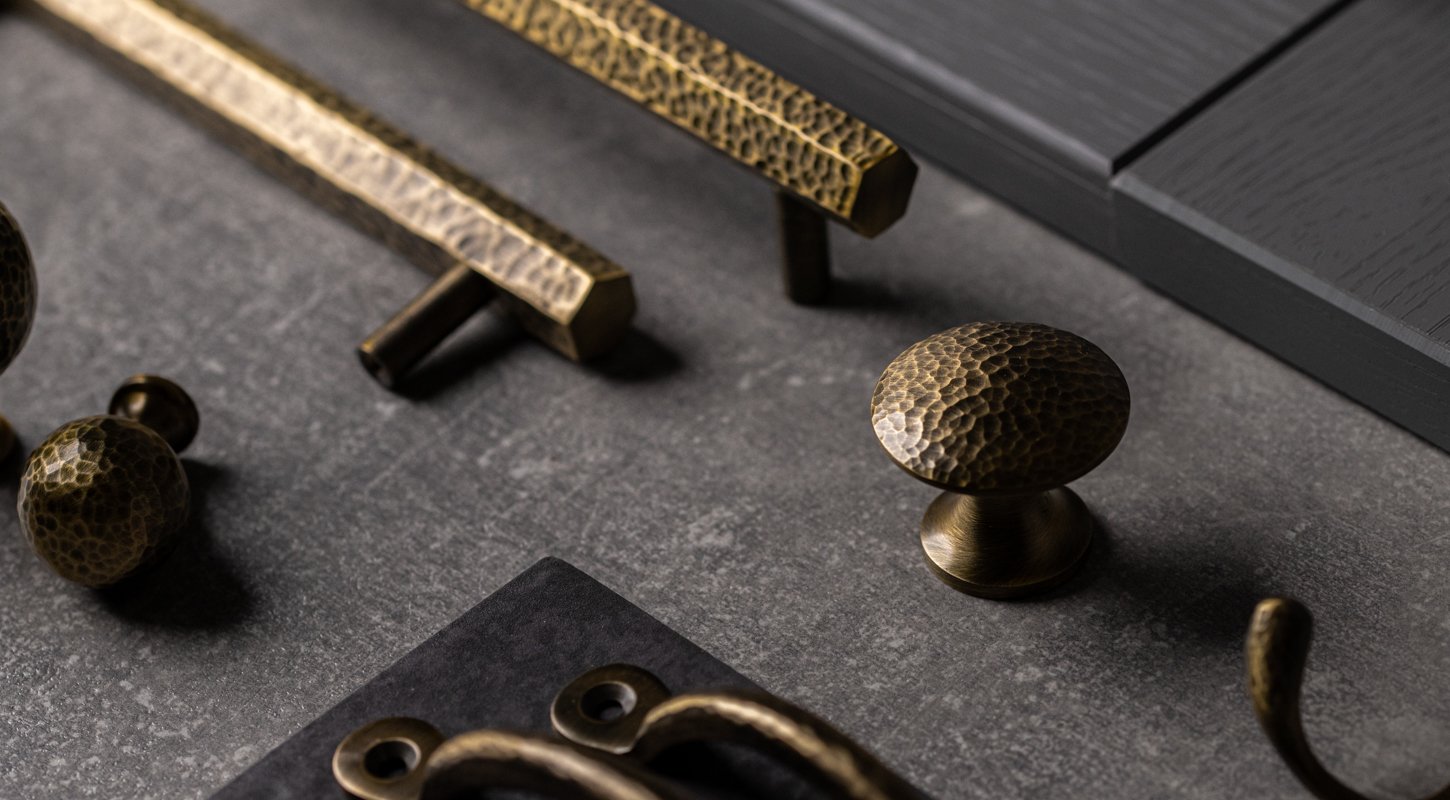








3 comments
Suffolk Latch Company on Nov 06, 2023
Hi Adriana, With regards to replacements, converting a door knob to handle is very simple as the tubular latch is in the correct place already. We would recommend our Warwick Round Rose Door Handles, as the tubular latch for door knobs can be very stiff, so combining that with a sprung door handle can cause problems. This process would be simple as you can fit these handles onto the motice bar with the included wood screws in a matter of minutes. Kind regards SLC
Adriana Forrester on Nov 06, 2023
Hi, I wonder if you can help? Do you know what the easiest solution would be for converting our door knobs (we bought the black beehives for our renovation) to door handles. 3 years have passed since having the doorknobs fitted and we are finding children and elderly parents are struggling to use the door handles, sometimes getting stuck in rooms. We have the beehives on all doors so 15-20 door need amending. Are there any lever handles that can be easily added to replace the beehives? Many thanks, Adriana
David Federico on Feb 08, 2022
Looking for product catalog